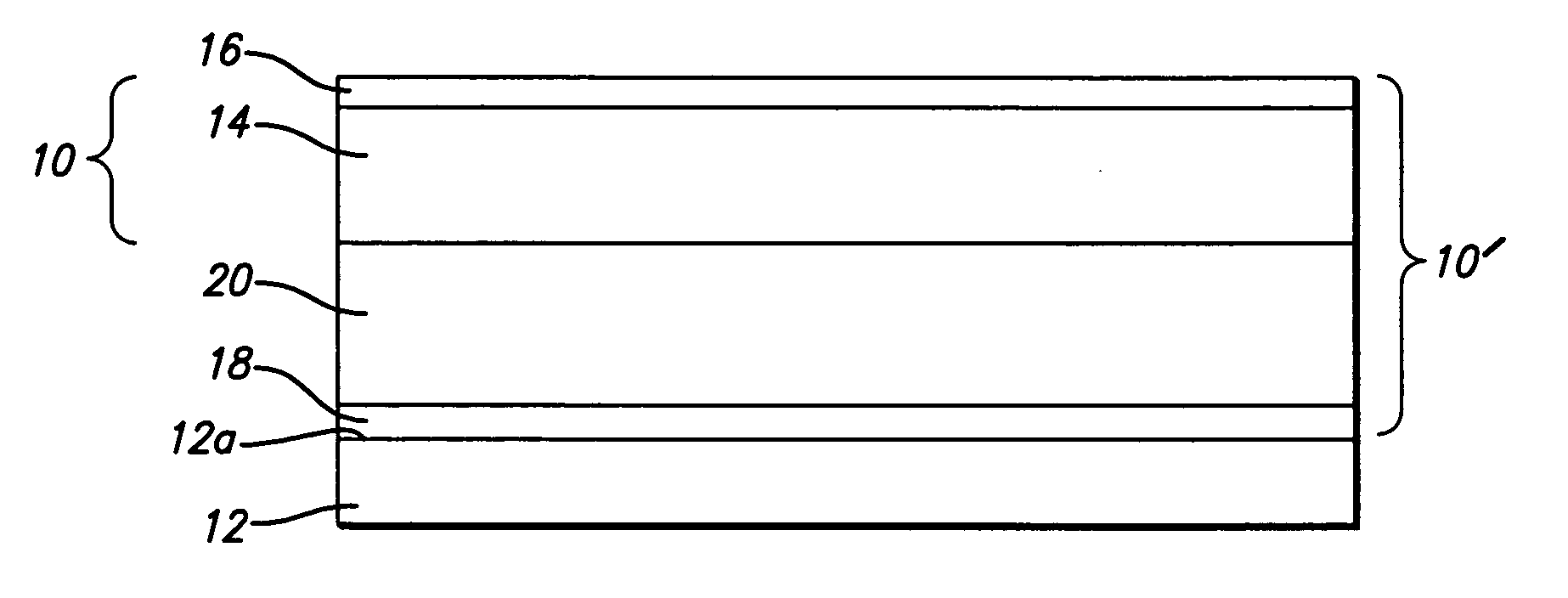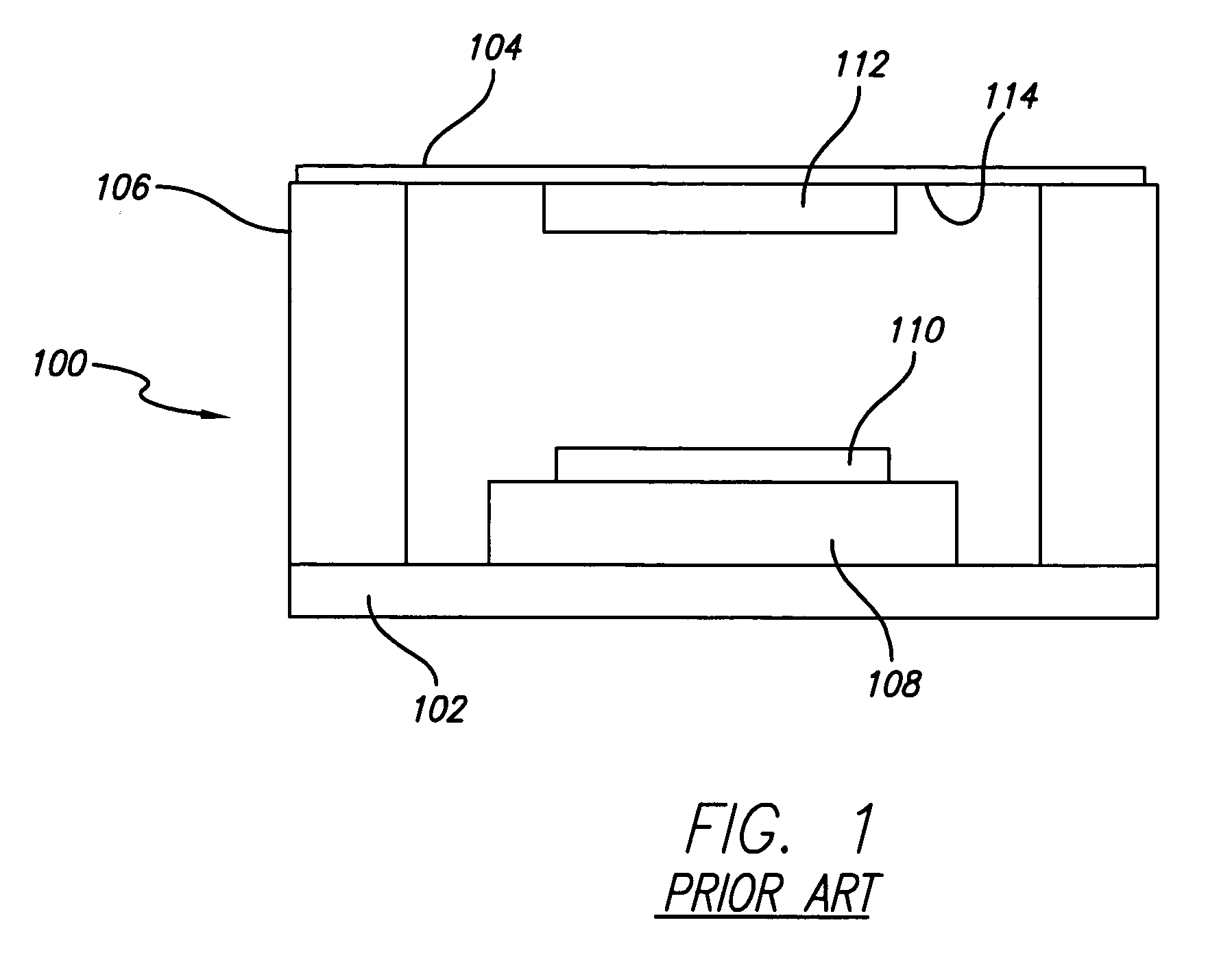Multilayer thin film hydrogen getter and internal signal EMI shield for complex three dimensional electronic package components
a technology of electronic package components and hydrogen getters, which is applied in the direction of lighting and heating apparatus, other domestic objects, and semiconductor/solid-state device details, etc., can solve the problems of reducing the performance and reliability of gallium arsenide (gaas) integrated circuits, unable to re-work the assembly, and unable to return false results, etc., to achieve no cost or time, small volume, and flexible application.
- Summary
- Abstract
- Description
- Claims
- Application Information
AI Technical Summary
Benefits of technology
Problems solved by technology
Method used
Image
Examples
Embodiment Construction
[0032] FIG. 1 depicts a conventional two-dimensional (2-D) module, which includes a cover that is an ideal location for an RF absorber material and a hydrogen absorber. The module 100 comprises a base 102, a cover 104 and a sealing ring 106 that seals the base to the cover. Inside the module 100, a substrate 108 is provided that supports a device 110, e.g., a Monolithic Microwave Integrated Circuit (MMIC) type, with a gallium arsenide (GaAs) semiconductor. On the inside of the cover 104 is provided a hydrogen gettering structure 112, typically comprising a titanium layer and a palladium layer thereon. The inside of the cover 104 may also include an RF absorbing material (not shown).
[0033] FIG. 1 amplifies the difference between conventional 2-D packaging and 3-D electronics with respect to the application of the prior art. It will be noted that the prior art is form fit with conventional 2-D packages. Since the cover 104 is simply used as a mechanism to close the package volume, it ...
PUM
| Property | Measurement | Unit |
|---|---|---|
| thickness | aaaaa | aaaaa |
| thickness | aaaaa | aaaaa |
| temperatures | aaaaa | aaaaa |
Abstract
Description
Claims
Application Information
 Login to View More
Login to View More - R&D
- Intellectual Property
- Life Sciences
- Materials
- Tech Scout
- Unparalleled Data Quality
- Higher Quality Content
- 60% Fewer Hallucinations
Browse by: Latest US Patents, China's latest patents, Technical Efficacy Thesaurus, Application Domain, Technology Topic, Popular Technical Reports.
© 2025 PatSnap. All rights reserved.Legal|Privacy policy|Modern Slavery Act Transparency Statement|Sitemap|About US| Contact US: help@patsnap.com



